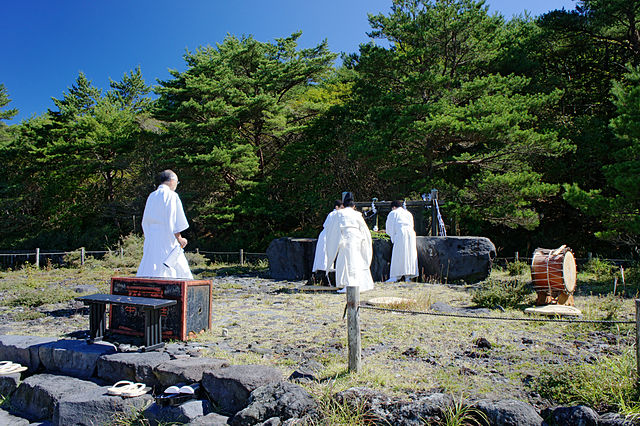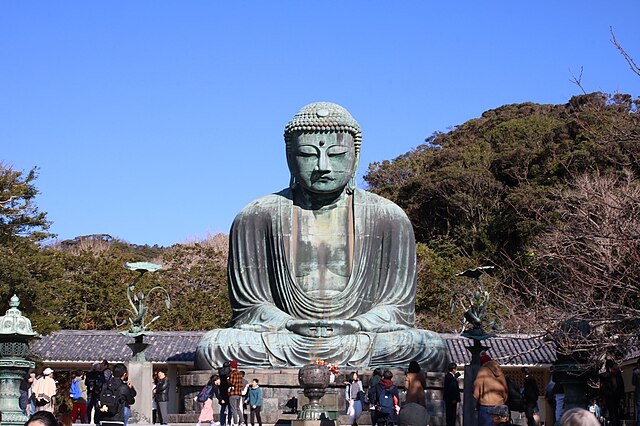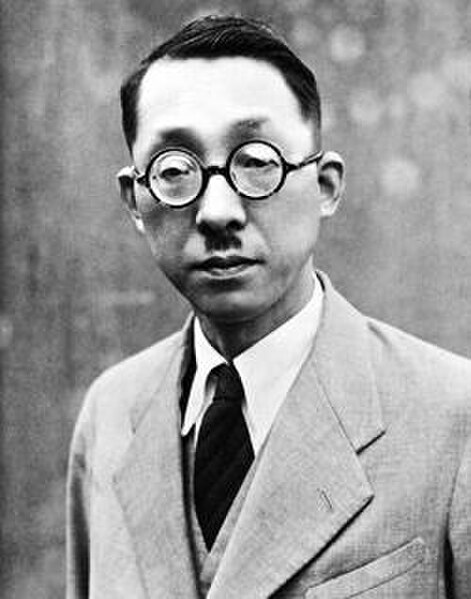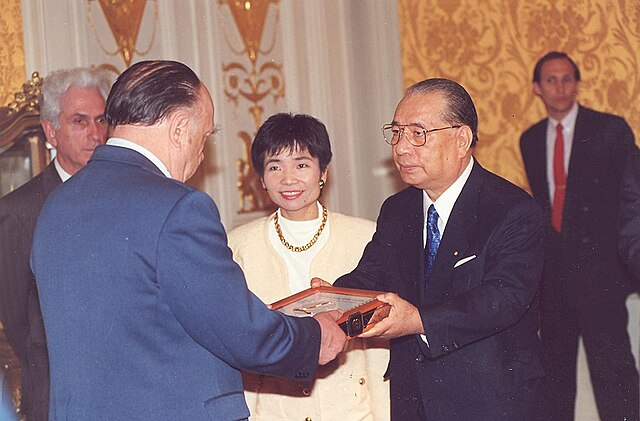Religion in Japan is manifested primarily in Shinto and in Buddhism, the two main faiths, which Japanese people often practice simultaneously. According to estimates, as many as 80% of the populace follow Shinto rituals to some degree, worshiping ancestors and spirits at domestic altars and public shrines. An almost equally high number is reported as Buddhist. Syncretic combinations of both, known generally as shinbutsu-shūgō, are common; they represented Japan's dominant religion before the rise of State Shinto in the 19th century.
A ritual at the Takachiho-gawara, the sacred ground of the descent to earth of Ninigi-no-Mikoto (the grandson of goddess Amaterasu)
The Great Buddha at Kōtoku-in temple in Kamakura, Kanagawa Prefecture
Takabe-jinja in Minamibōsō, Chiba, an example of the native shinmei-zukuri style
Haiden of the Izanagi-jinja in Suita, Osaka
Soka Gakkai is a Japanese Buddhist religious movement based on the teachings of the 13th-century Japanese priest Nichiren as taught by its first three presidents Tsunesaburō Makiguchi, Jōsei Toda, and Daisaku Ikeda. It is the largest of the Japanese new religions and claims the largest membership among Nichiren Buddhist groups. The organization bases its teachings on Nichiren's interpretation of the Lotus Sutra and places chanting Nam Myōhō Renge Kyō at the center of devotional practice. The organization promotes its goals as supporting "peace, culture, and education".
Tsunesaburō Makiguchi, first President of the Sōka Gakkai
Jōsei Toda, second President of the Sōka Gakkai
Daisaku Ikeda, third President of the Soka Gakkai, 2010
Daisaku Ikeda receiving "Leonardo Prize" in 2009 from Alexander Yakovlev








